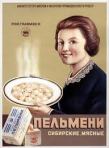Esther’s Artichoke Spread
2 – 8 oz. cans of artichokes (use bottoms, whole, or quartered) – drain liquid
1/2 to 3/4 cup best quality mayonnaise (not Miracle Whip). Although some cooks make this dish entirely with mayonnaise, I use a mixture of plain low-fat yogurt, sour cream, creme fraiche, quark, or even whipped cream cheese along
with a couple of tablespoons of mayonnaise, adjusting liquid so the mixture retains sufficient moisture.
Fresh lemon juice — from 1 large lemon
2 or 3 (or more) large cloves of garlic, crushed or minced fine
3/4 cup freshly grated aged Parmesan cheese or use a mix of grated Romano and Parmesan
dash of rice vinegar or dry white wine
pepper to taste
4 oz. sliced almonds
Chop drained artichokes roughly, mix in mayo, lemon juice and grated cheese. Mix in garlic and other seasoning. Taste and adjust with dash of vinegar, white wine or more lemon juice or cheese.
Don’t let the mayonnaise taste dominate. The mixture should be sticky but not dripping wet. Put mixture in a baking dish, top generously with sliced or slivered almonds. Walnuts or pine nuts can be used in a pinch.
Bake at 350 for about 20 minutes.
This recipe can be increased for a crowd. For 4 cans of artichokes, use about 1 cup of mayo and 1-1/4 cup grated parmesan. Let taste guide increases in seasoning.
This is a terrific dish to bring as an appetizer for a pot luck event. Always a pleaser.
The original recipe came to me from Esther Safran Foer when we both worked at a K Street public relations firm.

Poison Romance and Poison Mysteries
a Gutenberg eBook
My new project is Double 00 Books, a website dedicated to mysteries, espionage and crime books.
Mysterious chefs and murder by lethal food and drink are popular subjects for the Cozy genre. The Washington Post restaurant critic and food section editor Phyllis Richman turned to mystery writing after retirement, writing as Chas Wheatley.
C.J.S. Thompson was a prolific writer, physician, collector and analyst of the chemical and toxic properties of food and drink.
His 1899 study Poison Romance and Poison Mysteries is an ebook available for free download through Gudenberg.org. The ancient art of poison never goes out of style.
Greensboro NC Hosts Atlantic World Foodways Conference
The Atlantic World Research Network – University of North Carolina, Greensboro
Atlantic World Foodways Conference – January 31 – February 2, 2014.
Look Out! These recipes are for White Food.
Made of potato, coconut, cream, egg whites, milk, sugar and almonds, these concoctions suggest the type of bland, colorless food that the No White Food blog plans to avoid.
But these delicacies are something special — collected and transcribed by the writer-adventurer Lafcadio Hearn who lived in New Orleans from about 1877 to 1890 and wrote for several newspapers.
The recipes are transcribed just as he wrote them, with unusual spelling and style. You won’t find precise measurements or involved processes here.
My particular favorite is the recipe for Syllabub, a beverage used as a restorative after illness or fatigue. Apparently Hearn’s landlady would cosset him with a nourishing syllabub when he was under the weather.
Potato Puffs
Very nice potato puffs may be made by mashing seven or eight potatoes smoothly, and mixing in with them two well beaten eggs, two tablesspoonfuls of melted butter, also well-beaten, and a cup of milk. Pour it into a pan and bake in a hot stove.
Potato Croquets
Take 6 boiled potatoes – cold mashed potatoes will do – add three tbsp of grated ham, a little pepper, salt and chopped parsley, also, the yolks of three eggs; form into balls, dip in egg and roll in bread crubs; fry in hot lard; garnish with parsley.
Custard Coconut Pudding
Grate one cocoanut…take a quart of milk, four eggs, and a cup of sugar. Beat sugar and eggs light, then stir in the milk, and last the cocoanut and such flavoring as you may prefer. Pour this into a deep pan lined with paste; put fancy strips of paste across it and bake lightly. (Note, “paste” in this context is pie pastry.)
Blanched Almonds
Pour boiling water on them and let remain in it a few minutes. Remove the skins, throw the almonds into cold water, drain them from the water, but do not wipe them. Let dry and store or use in other recipes.
Coconut Candy
Four cups of water, 2 -1/2 c. fine white sugar, four spoonfuls of vinegar, and a piece of butter as large as an egg; boil till thick, or about 3/4 hour. Just before removing stir in one cup of desiccated coconut, and lay in small, flat cakes on buttered plates, to cool and harden.
Syllabub
Take the juice of a large lemon, and the yellow rind pared thin; one glass of brandy, two glasses of white wine, and a quarter of a pound of powdered sugar. Put these ingredients into a pan and let them remain one night; the next day add a pint of thick cream, and the whites of two eggs beaten together; beat them all together to a fine froth, and serve in jelly glasses.
Source: La Cuisine Creole, Lafcadio Hearn’s Creole Cook Book. Pelican Pulishing Co, Gretna, Louisiana. 1990
Cooking in Ten Minutes by Edouard de Pomaine.
“Do not imagine that ten-minute cooking is going to condemn you to an eternal round of beef-steak without any of the frills of finer cookery.
Your gas stove has two burners, if not three. What is to prevent you cooking slices of ox kidney saute’ in butter on the one, while you make a sauce bearnaise on the other?
During the same ten minutes you can prepare both the kidneys and the sauce. The result is delicious. I have done it time and again. Thanks to the sauce the ordinary ox kidneys, despised by the fastidious, assume an aristocratic manner.
You can always prepare meat and a sauce, but are there many rapidly prepared sauces? That all depends on the liveliness of your imagination. Invent the sauces. The great thing is to prepare them quickly, and for this you must follow the advice which I shall give you for the preparation of some standard sauces.”
~~~~~
Here’s what Elizabeth David wrote about Pomaine in her book An Omelette and a Glass of Wine. [pp. 175-182]
“In the days when Pomaine was writing, chefs did not dream of braising vegetables – lettuces, leeks, Belgian endives, for example – without a preliminary blanching. That rule was immutable, and woe betide anyone who disregarded it. Dr. de Pomaine bypassed it, and I adopted his method, particularly his recipe for cooling Belgian endives in butter and entirely without a prior water baptism. That sort of unorthodoxy got one into trouble. …
Doctor Edouard de Pomaine’s real name was Edouard Pozerski. He was of purely Polish origin, the son of emigres who had fled Poland and settled in Paris after the Revolution of 1863. …
De Pomaine was the first writer to propound such happenings as the fusion of egg yolks and olive oil in a mayonnaise, the sizzling of a potato chip when plunged into fat for deep-frying, in language so straightforward, so graphic, that even the least scientifically minded could grasp the principles instead of simply learning the rules. In cooking, the possibility of muffing a dish is always with us. Nobody can eliminate that. What de Pomaine did by explaining the cause, was to banish the fear of failure.
Adored by his public and his pupils, feared by the phoney, derided by the reactionary, de Pomaine’s irreverent attitude to established tradition, his independence of mind backed up by scientific training, earned him the reputation of being something of a Candide, a provocative rebel disturbing the grave conclaves of French gastronnomes, questioning the hold rites of the ‘white-vestured officiating priests’ of classical French cookery.
Of a dish from the Swiss mountains, Dr. de Pomaine observes that it is ‘a peasant dish, rustic and vigorous. It is not everybody’s taste. But one can improve upon it. Let us get to work.’ … ”
Resources:
Fasolatha is a hearty Greek Soup originally conveyed to me by Michigan Schlief and adapted by science writer Sean Markey in November, 2012.
First: Chop holy trinity of flavor – celery, carrot, onion – 3 of each in small dice.
Second: Place the chopped vegetables in a wok or soup pot, with 2- 3 tbsp olive oil. Heat and saute. Season with salt and pepper.
Third: Add a quart bag of frozen tomatoes from last summer’s garden or a home-canned jar of whole tomatoes, or, if you must, a can of commercially canned tomatoes. Add 2 cups stock. Cook. Add 2 small cans of cannellini — white kidney beans which have been rinsed first.
Fourth: Top with chopped parsley. Season and serve.
This is a soup that will nourish, heal and enliven the troops.
Saus Kacang, recipe #1
7 tablespoons peanut oil
1 tsp finely chopped garlic
2 large dried red chilis (hot, not mild)
2 tbsps finely chopped onion
1 tsp trassi (dried shrimp paste)
1 tbsp lemon juice
1 tbsp kejap manis (sweet Indonesian soy sauce)
350 ready made peanut paste (or use chunky peanut butter)
1.5 tbsps palm sugar or brown sugar
Heat the oil in a wok and brown the onions and garlic.Remove from oil and place on paper towel. Fry the chilis on a low heat for just under a minute in oil. Remove from oil and place on paper towel. Once they are cool cut them open and remove the seeds. Chop the remaining chili flesh fine. Add the trassi to the remaining oil in the pan, crush with a wooden spoon and stir into the oil so that it dissolves as much as it can. Add lemon juice and ketjap manis. Remove the heat from heat and mix in peanut sauce. Let this mixture cool.
Mix garlic, onion, chilli pieces, and sugar through the cooled mixture. Store in a glass jar. When you want to use this base in a sauce use 1 part of paste to three parts of lightly salted water or coconut milk. Stir and bring to a boil. Remove from heat. Ready to eat with gado gado, satay (chicken threaded on a kebab stick) or other dishes.
Saus Kacang, recipe #2
(a quick version)
6 tbsp peanut butter
1 cup water
3/4 tsp garlic powder
2 tbsps palm sugar or brown sugar
2 tbsp sweetened Indonesian soy sauce
juice from 1 lemon or lime
1/2 tsp trassi (dried shrimp paste)
cocnut milk or water
Mix peanut butter and water in a pan over medium heat until the mixture nearly boils. Remove from heat and add remaining ingredients. If sauce is too thick, add more water or coconut milk. Taste and add more soy sauce, if needed.
Saus Kacang recipe #3
Pel’meni Recipes
Though it was born in the far frozen reaches of the tiga, Pel’meni warms hearts and tummies all over Russia and the
countries that used to be part of the Soviet Union. It’s Russia’s answer to fast food; real workers chow down at pelmennaya (pel’meni parlors). Pel’meni is food for the masses, but not mass-produced. No canned pel’meni by Chef Boyar. Students of Russian history may remember the boyars were the landed gentry class during Moscow’s formative years.
In permafrost regions, pel’meni were made in quantity, frozen and stored outdoors in sacks slung high away from dogs or other scavangers, then cooked as needed. We can imitate those resourceful Siberian cooks by freezing the pel’meni on a tray and putting them in resealable freezer bags or containers to be cooked later. Pel’meni can also be prepared and served immediately, but purists insist that pel’meni should be frozen before cooking.
In the old days — and probably in remote areas of Siberia today — cooks just took a frozen haunch and shaved or scraped off the meat needed for a batch of pel’meni. The traditional horsemeat filling might be difficult to find, or to stomach now. Modern Russians use ground beef, lamb and pork or mushrooms for the pel’meni filling.
Recipe #1:
Larissa Davidyuk’s Pel’meni
Larissa was my hostess in Moscow. A scientist, she was unemployed when I visited her in the mid-1990’s.
Make an egg pasta dough.
3 cups flour
1 tsp. salt
1 egg
1 cup cold water
Using a mixer with bread hooks or food processer, blend four and salt, add egg, then add water gradually until dough forms a ball. Transfer to a floured surface and knead about 2 minutes until smooth. Cover and let stand for 1/2 hour.
[This Pel’meni dough recipe is adapted from Please to the Table by Anya von Bremzen & John Welchman, Workman Publishing, N.Y. 1990.]
Meat filling: Mix of 1/3 pound each ground lamb, beef and pork. Mix with salt, pepper, 2 tbsp. finely chopped garlic and the 1/2 cup minced whites of scallions.
Roll out the dough appx. 1/8″ thick. Cut circles with a glass. Place small spoonful of filling on the dough. Fold over and pinch closed. Bring ends together.
Boil water. Cook the pel’meni in boiling water until they rise in the water, then 5-7 minutes more. Serve with butter or sour cream. Serves 4.
Once in Siberia, I was eager to pursue the quest for pel’meni. You might even say I was hungry for an authentic local food experience. The merest taste of those fish heads and bear paws was all I could manage.
In Khabarovsk, a port on the Amur River bordering China, the hunt for ultimate pel’meni took me to Natalya Mamadzhanova, a spirited blond businesswoman turned restauranteur. Last June, she opened V/Gostiakh u Natali, (“As Natalie’s Guest”), a homey little restaurant specializing in Russian food.
Recipe #2:
Natalie’s Pel’meni in Taiga Manner
Make a soft dough. (see recipe above)
Make the filling:
To 1 pound of ground pork, add 1 large finely chopped onion and 6 chopped cloves of garlic.
Roll out dough to about 1/8″. Make the pel’meni by putting filling on a small circle of dough. Fold dough over and seal. Twist ends of half-circle around to form a ring.
Prepare the sauce: Make a clear soup from meat bones. Put chopped onion, carrot, pepper, tomato and boiled paparnick (collard greens) in a soup kettle. Cover vegetables with the hot bouillon. Add sour cream, black pepper and Korean sauce (soy sauce). Cook, covered, over warm heat, not boiling.
Meanwhile, cook the pel’meni in boiling salted water, about 8 minutes. Put in a small serving dish and cover with the vegetable sauce. Add garlic and warm dish on stove. Serves 4-6.
In the cavarnous, heavily curtained dining rooms of what was once The Khabarovsk Intourist Hotel, Pel’meni is served in a small ceramic pot which has been covered with a crust and baked. The broth is meaty and the pel’meni are bite sized
Recipe #3:
Intourist’s Pel’meni
Intourist provided tourist services, guides, information, reservations and minders for visitors during the Soviet era. Many large city hotels came under the wing of Intourist which was not known for its creativity, flexibility or attention to customer service. However, their chefs did know how to make Pel-meni.
Meat mixture: 1 lb ground beef, salt, 1 1/2 cups minced onion, fresh ground black pepper.
On a piece of dough the size of a half-dollar piece, place a small amount of meat mixture. Fold the dough over and press the edges together. Pull the ends around to make a halo effect around the top. Cook in boiling water, 5 minutes. Place pel’meni in small serving crock. Add meat broth. Cover dish with a round of dough and press dough into sides of serving crock. Bake in oven. Serves 4.
Recipe #4:
Sveta Gridin lives in Petropovlosk-Kamchatsky, a port on Kamchatka. She was a college student when I met her nearly 20 years ago. Though she is typically Russian in her devotion to family and spouse, her demanding class schedule means pel’meni making is tied to special occasions. I sampled Sveta’s pel’meni at a farewell party she gave for an American graduate student. Her pel’meni are larger, more like meat dumplings and the cooking broth and vegetables form part of the meal.
Here is Sveta Gridin’s recipe for Pel’meni:
Filling: grind together 1 to 1-1/2 lb meat, 4-5 small onions, and salt and pepper.Dough: Mix 3 cups flour, 1 cup milk, 1/2 tsp salt, 3 eggs. Knead and refrigerate. Roll into log 3/4″ thick and cut into 1/2″ slices. Press or roll into circles 1 1/2″ diameter, 1/4″ thick.
Make the Pel’meni: Place small tsp of meat in center of each rolled dough circle. Pinch closed. Place on a floured cooking sheet. Boil water with chopped carrot, cabbage, salt and bay leaf. Remove vegetables with slotted spoon. Drop pel’meni into the boiling vegetable water and cook for 10 min. Serve with butter. The broth becomes the soup course and the vegetables are served on the side.
A version of these recipes appeared in the Culinary Historians of Washington newsletter.
The following text is an excerpt from The Atlantic, Corby’s Table , 2002.05.01, a book review written by Corby Kummer. I use this excerpt in classes on Food Writing that I teach online for UCLA, and at other venues, as an example of how to write an engaging book review and display the essence and motivations of the author.
Corby Kummer’s voice starts here, commenting on Barbara Haber and her book From Hardtack to Home Fries:
Not all women like to cook, of course. But like it or not, most women’s lives are entwined with food.
The recognition that food and everything having to do with it can offer perspective on many aspects of women’s lives led Barbara Haber to build the culinary collection at the Schlesinger Library at Radcliffe into a powerhouse of women’s studies. In the thirty years since Haber arrived in Cambridge, from Milwaukee by way of the University of Madison with a degree in library studies, the collection has become a magnet for scholars, journalists, and cooks. The Schlesinger is now a national touchstone for anyone interested in food, not just because it houses the books and papers of Julia Child, M.F.K. Fisher, and Ella Fitzgerald (an enthusiastic cook, it turns out), among many others, but because Haber herself is so magnetic.
She’s also a terrific speaker. I’ve long gone out of my way to attend any lecture Haber is giving, knowing that whatever the subject I’ll gain insight into a whole culture as well as the women who were active within it. Through first-person accounts, contemporary books and sources, and her own witty and sharp comments, Haber brings times and places alive. Hearing her on the social structure of the harem at Topkapi, for instance, altered my understanding of the cruel beauty of the Ottoman empire. (Haber and I were on the eve of a trip to Turkey organized by Oldways, the Cambridge-based food think tank; everyone should be able to listen to Haber at the start of a journey.)
From Hardtack to Home Fries offers a collection of nine wonderfully readable essays on an unexpected range of topics that have captured Haber’s interest. Every reader will have her or his favorites. I know that Haber herself is particularly proud of her essay on Mrs. Henrietta Nesbitt, the cook who made famously bad food in the White House of Franklin and Eleanor Roosevelt. More than just a terrible cook, Haber finds in her a woman Mrs. Roosevelt valued as a helpmeet, one who cared about the President’s health and about running a sensible household. Julia Child liked that chapter, too: in a sign of her regard for Haber, she wrote a warm endorsement for the back cover after decades of blanket refusals to blurb any book.

Uniform worn by women who worked for the Harvey Restaurants serving railroad travelers at stops in the western USA.
My own favorite is a chapter on the Window Shop, a bakery, restaurant, and sui generis social-service agency for genteel Jewish refugees who arrived on the academic shores of Cambridge starting in the late 1930s. The oral and written histories Haber collected yield a portrait of a turbulent and fascinating time, along with a good recipe for Sacher torte. I was also pleased to learn about the Harvey Girls—those white-aproned purveyors of good food and rectitude along the Atchison Topeka and Santa Fe Railroad, in a chapter of special charm that recalls a rough and just-civilizing time in our not-so-distant past. A chapter on the early diet gurus Sylvester Graham and John Henry Kellogg offers a crackling (even snapping and popping) account of an odd turn in American health, which gave us our national breakfast not to mention ideas about diet both sensible and peculiar.
Barbara Haber keeps her focus on women’s relationships to food—especially as it pertains to personal finances. She chronicles how several women found dignity, livelihoods, and their own identities by starting catering businesses and restaurants. A lovely last essay tells how she herself came to collect and study cookbooks; it also shows a touching understanding of her own relationship to her mother. An exceedingly valuable appendix includes notes on the many books mentioned throughout, with a bonus of many more recommendations. These capsule reviews are manna for any aspiring food and social historian. They offer a generous taste of the wealth of knowledge Haber has always freely shared.
There are a few recipes, too—ones I’d like to make. “A modified Graham bread” shows what the health-promoting Sylvester Graham really had in mind: whole grains made appealing and somewhat sweet as a kind of bread, rather than just a sweet cracker for a campfire concoction with marshmallow and chocolate (although really, is there a better dessert than S’mores made over an open fire?). Gekochtes Rindfleisch, or boiled beef, sounds dull, but in the hands of the Viennese émigrés eking out a living at the Window Shop, it was a feast reminiscent of home. A feast it is, with its rich broth and fresh vegetables, and also a way of turning a humble cut into a one-dish meal that can last many days by being served as a soup or main course. Finally, baked fudge is an easy confection that demonstrates why Cleora Butler, the recipe’s author, became a Tulsa legend as a talented businesswoman and cook. Like many of the women Haber discerningly chose, she turned her culinary skills into a way of supporting herself and her family.
—By Corby Kummer











